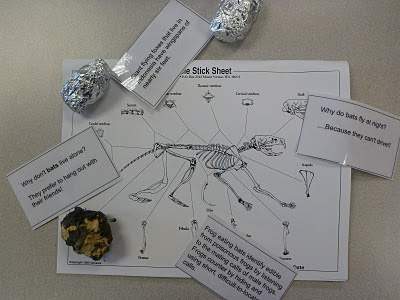
Slightly ahead of the group, Annie and I walked up Post Road, catching the numerous crickets as we went. She suddenly turned to me and said "It's sort of funny when you look around at people. Everyone has a cellphone or iPod or something to occupy themselves with when all they really need to do is go outside!" Well, that was a great end to a week. Annie is in 5th grade, or 4th, I can't remember. I just know she had a fantastic day.
We had just spent the day at Hopkins Demonstration Forest in Oregon City. Our group went down to the creek to explore, catch aquatic insects and test the water. Along the way, we had the students lead with a map in hand. The group was divided between going the long way and 'off-road' or staying on the trail and going directly to our tub filled with the supplies we would need. Annie of course wanted to go directly to the tub and get started.

The group compromised and got to the tub soon. Off came the shoes, on went the boots. Into the water the kids went after a bit of instruction. They were filled with energy and throughout the day, Annie would stop, look up, and shout "We are the luckiest group here today. We get to go in the water!"

Wolftree sponsored the trip and had prepared the students earlier this month with a classroom visit. Hopkins Demonstration Forest provided a great place to study aquatics, trees, plants, fungi and lichen, and wildlife.


At the end of the day during the student presentations, we learned the fungi and lichen group had seen cougar tracks and found lots of edible mushrooms including 'The Prince' and chanterelles. Other groups brought back tales of licking banana slugs, counting the rings on a tree core, or finding the 'toilet paper' shrub. Despite the chilly start to the day, the sun came out and the kids left with a bit more knowledge and enthusiasm for being outside.

Submitted by Donna Allard
























